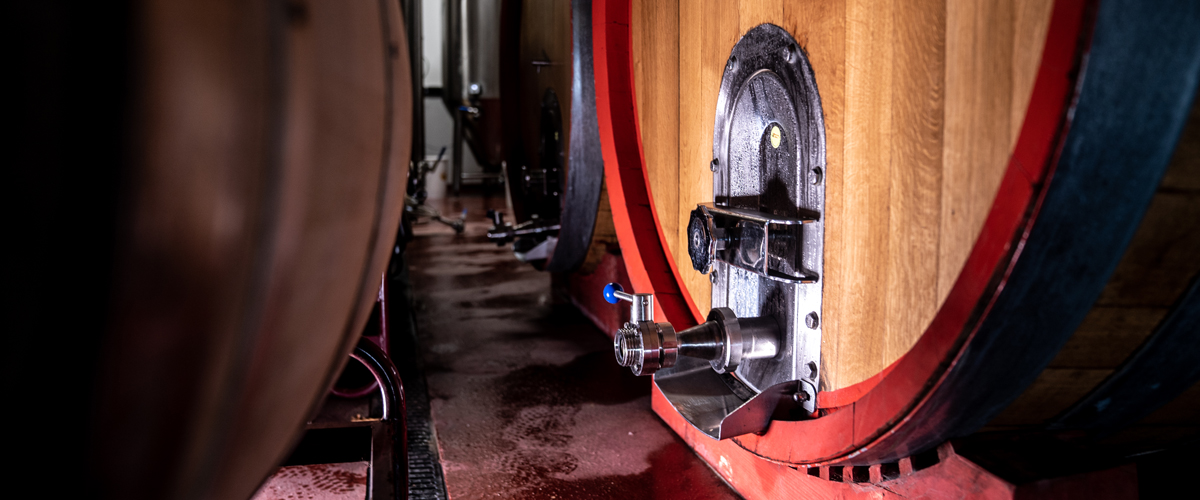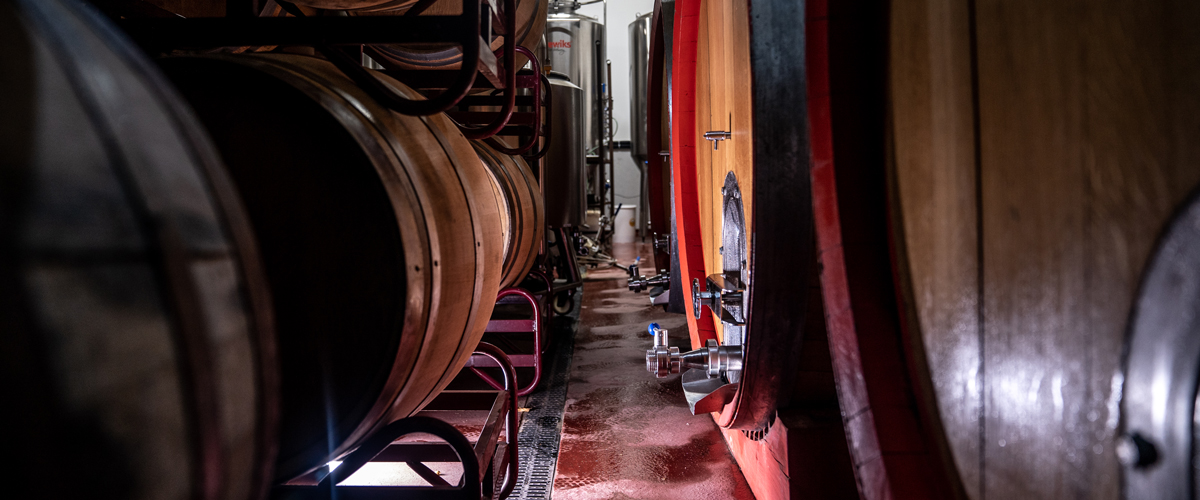Foeder Aged Beer

Foeder Aged Beer
Creating layers of complexity with beautiful foeder aged beer.
Brewing beer is an art that requires passion and dedication, but the process can be enhanced with oak foeders. It's been our dream to have Oak Foeders and explore what’s achievable in a fermentation project. Foeders are large wooden barrels, usually made of oak, that have been used for centuries to store and age beer and wine. Oak ageing adds layers of flavour, aroma, and character to the beer that cannot be achieved through other means. We’ll look at how oak foeders can enhance the depth and layers of flavours in a beer that isn’t commonly available from breweries in our region.
What are Oak Foeders?
Oak Foeders are large oak barrels used to ferment and condition the beer. While anything larger than 600 litres is considered a foeder, the largest ever constructed was the size of a warehouse and held up to 1 million litres. Originally used to store wine, breweries now use foeders to ferment both clean and wild beer. They provide depth, complexity, and unique microflora to wild beers and also ensure consistency in the final product as opposed to many mixed barrels lots. Most foeders used at Our Brewery were sourced from French Vineyards, requiring a lot of tender love and care to maintain.
Additionally, for some of our foeders, we have had cooling and heating plates installed, and they are exclusively used for creating very complex beers allowing specific temperature control. Barrels are an integral part of Our brewery's mixed fermentation program of beer-making, and foeders are no exception. We love them so much that they inspired the Our Brewery logo designed by Cuan.
The benefits of using Oak Foeders for brewing beer
The brewing team loves Oak Foeders for their ability to impart subtle, complex flavours and aromas to beer. Oak is a porous watertight wood, allowing beer to absorb some of the flavours from the oak. Barrels are usually charred on the inside to create a light, medium, or heavy toast, determining the strength of the flavour imparted. They have the ability to slowly expose oxygen to the microflora, which creates some genuinely beautiful flavours.
One of the main benefits of barrel-ageing beer is the nuanced and complex flavours it can bring out. Aged beer also tends to be more mellow and well-rounded in its flavour. French Limousine oak has a highly desirable flavour profile with notes of vanilla, subtle spice and textures from the microflora. Additionally, a used barrel can also imbue the beer with the flavours of whatever was last aged in the barrel, hence, why we have many different barrels in our portfolio.
The slow exposure to oxygen that comes with barrel ageing creates subtle flavours in aged beer. Oxygen slowly leaks through the porous oak, which develops different flavours in the beer. This process also introduces different bacteria and wild yeasts that can introduce new flavours and mellow out the overall flavour profile of the beer.
We are taking advantage of these unique flavours produced by barrel ageing. We give the beers all the time they need to create a unique character and complexity. The benefits of using Oak Folders for brewing beer make it an attractive option for developing our own beautiful signature flavour profile.

Tips for using Oak Foeders
Oak Foeders, which are a larger alternative to our barrel collection, are becoming increasingly popular with the team as we learn more and more and taste the evolution of beers throughout the ageing process. It's hard to explain in words just how beautiful they are at fermenting funky and mixed-fermentation beers. They are an excellent option for our team who want to explore the flavour complexity that foeders & barrels can add to our beer.
Oak Foeders are generally made from wood products, such as Acacia, American White Oak, French Oak, Hungarian Oak, Romanian White Oak, and Chestnut. We have been very careful with the selection of our wood. By using wood products instead of steel, we see considerable differences in the mouthfeel and layers of complexity.
For those new to using Oak Foeders, there are several tips to keep in mind: Be sure to source carefully and learn the history. Sanitise all surfaces before first use, considering cleaning temperatures carefully. Use only clean, warm filtered water for filling and topping off the foeder; adjust your filling and topping levels as needed. We recommend doing it in thirds and monitoring the temperature of the foeder regularly. Finally, remember to taste your beer frequently, pay attention to changes in flavour and aroma over time, and document all your notes.
Bridging the gap between beer and wine
As our brewers experiment with small-batch brewing and using barrels and foeders that are more commonly associated with winemaking, a conversation has begun to form around the cultural heritage of beer, the exploration of historical techniques and how we can learn and develop a bridge between beer and wine. In some cases, the higher price of these beer/wine hybrids has created a barrier between those who want to drink them and those who can afford them. We want you to buy these beers directly from us at the best value. We ask that you value the careful research, effort and patience required to create these beautifully challenging & complex beers.
Our Brewers are looking to wine-making techniques to add a new dimension to their approach to brewing beers. Using oak foeders for ageing beer gives it subtle notes of flavour, such as vanilla, leather, tobacco and even a bit of smoke. These flavours are characteristic of aged wines in barrels and make for a very interesting drinking experience. Patience is rewarded in these beer styles, as the results of long periods of ageing bring out more complex flavours that you simply can’t get from shorter periods.
Our brewers have often created these beer/wine hybrids as passion projects. It takes an incredible amount of time and cares to create these unique beers, and the result is truly unique and special. It’s a fascinating exploration into how we can use beer and wine-making techniques to create a new flavour profile that is unlike anything else.
